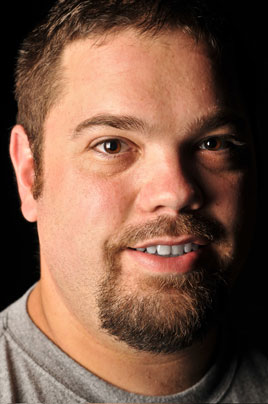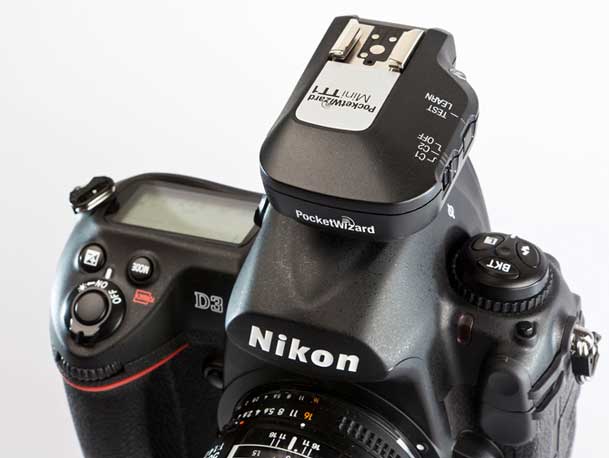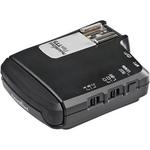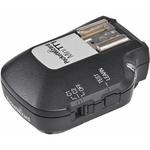
I want to thank Terry for offering up his tech blog to me today. I can’t say enough about Terry, his tutorials, videos, and all around great advice. He’s helped me immensely over the years. Terry asked me to talk to you guys today about my experience with the PocketWizard Flex units for the Nikon CLS system, as I’ve been in the Beta testing program since June. I was first approached by Phil Bradon about a year ago. Phil is the Product Marketing manager of the MAC group which is the distributor for Pocket Wizards in the US. He told me that he had added me on the (short) beta list of photographers to test out the new Flex Units for PocketWizard along with the Likes of David Hobby, Joe McNally, and the guys from the Fstoppers, just to name a few. A bit intimidating list… you had better believe it! Being a Nikon Shooter I couldn’t wait to get my hands on a set of the Flex units. I lusted after them since they were released for the Canon system. I LOVE the Nikon CLS (Creative Lighting System) Flash System. It is the main reason that I chose to go with Nikon over the years. The only thing that I (along with every other Nikon shooter that I know) has really, really hoped to see added was the addition of radio communication for the system instead of IR. With no option from Nikon, Pocket Wizard has answered our prayers with the Flex TT1 transmitter and the Flex TT5 Receiver.
Do they live up to the hype?

Long story Short, these things ROCK! Every Nikon shooter that I have talked to wants to know if they work as claimed. Do you really get rock solid construction just like every other PocketWizard Product? Yup. Do you really get 800 feet of TTL control? Yup. Everything that PW claims about these units is true. Anyone that has ever had any experience with PocketWizards in the past knows that when they do something, they do it right. The Flex units are no exception. The build is a solid high impact plastic. Securing them to the hot shoe is done via threaded locking screw on top of the hot shoe connectors. Staying true to form they have ¼ 20 metal threaded input for secure mounting to external sources.
During my time with the Beta Units I pushed them to the limits. I arranged models, at distances of up to and beyond the claimed 800 feet. I placed flashes behind walls, under benches, behind windows, hundreds of feet outside of windows on stands, and more… Each and every time the flashes fired without issue. Pocket Wizard did a stellar job of design and alpha testing. They have really allowed me to be more creative with my small flash lighting, and placement.

When I was looking to add TTL radio capability to my Nikon Flashes I looked at one other brand of transmitters besides the Pocket Wizards, the Radio Poppers. Without talking too bad about the other system, the advantages that I saw in the Pocket Wizards were this: The Pocket Wizards were backwards compatible with the older Plus II units that I was already heavily invested in for triggering my studio strobes. The Flex units had a solid connection with the camera and flash units unlike the Radio Poppers which required some creative field engineering to attach. There were a few other small things that came down to personal taste but it’s safe to say that I prefer the Flex Units over the Radio Poppers.
What I wasn’t expecting
The Flex Units lived up to everything that I expected. They did absolutely everything that I wanted. What surprised me were the things that they did that I wasn’t expecting. PocketWizard has not only made these units backwards compatible with the Plus II’s but they have also made them compatible with the Multimax units as well. Offering 52 channels you never have to worry about being on another shooters channel. One feature that I wasn’t expecting but totally took me by surprise is called Hypersync. High Speed FP mode allows your flash and camera to sync all of the way up to 1/8000th of a second, but with Hypersync you can sync with your studio strobes at 1/500th of a second or faster! This is HUGE! This is the difference between background in focus, and background out of focus while shooting with studio strobes in certain situations. This has to be my favorite feature added to these units. Something else I was hopeful that the system would do, but I wasn’t sure was sync regular Plus II’s with Studio strobes, and Flex units with Speed Lights running TTL seamlessly. The Shot of the girl on the motorcycle was done in this fashion with an Alien Bee for fill and a Sb900 as the main. PocketWizard has added one more thing that should make every Nikon shooter rejoice, the AC3 zone controller. Basically the AC3 is PocketWizard’s version of the SU800. On camera flash control for remote units, but for only $79.00!
Should you get them?
Absolutely! I have recommended that every Nikon shooter I know to get on the waiting list for these things. I ordered three more to expand my lighting possibilities myself. If you’re tired of losing CLS distance in bright sunlight, if you want to extend your flash distance and keep TTL, if you want to put flashes out of the line of sight and still be able to trigger them reliably, the PocketWizard Flex units are for you. With the backward compatibility, the introduction of the AC3 Zone controller in February, and PocketWizard’s reputation for solid performance, you can’t go wrong with these units.

Get the PocketWizard FlexTT5 Transceiver Radio Slave for Nikon i-TTL Flash here for $219.00

Get the PocketWizard MiniTT1 Radio Slave Transmitter for Nikon i-TTL System here for $199.00
See more of Jason's photography here.





Temp out of stock at B&H
Every article I’ve read about these mentions the Flex units integration with the Nikon CLS but what I’m still not clear on, is, will we be able to control the power of the flash from the back of the camera?
No. The flash triggers at ev.+/- 0. You have to have either an SU800, Sb-700,Sb-800,Sb-900, or the AC3 zone controller on top of the camera to control the flash.
Thank you for the clarification Jason.
Actually Dan, you can control the flash power output from the camera by using the FEC (if you Nikon has one) or the Exposure Compensation dial. In addition to that simple set up, you can also do it via the AC3, SU800, SB800 or 900 on camera. These are +/- adjustments to the iTTL value. If you want Manual Power Control with absolute settings, then you the AC3 or other devices.
I stand corrected. Admittedly I never controlled it like this. I always used a master. I was just interpreting what I read in the info. Thanks for the Clarification for our readers!
I’ve been looking to get PW’s but still not to familiar with how to use them….
with the FlexTT5 Transceiver, do you still need a receiver for the flash unit? Or do you just mount this on your camera and you’re able to take your flash anywhere w/in 800 feet? I need a PW lesson. :{
You have to have a transmitter (for the camera) and a receiver (for the flash). It allows you to go up to 800 feet and fire/control the flash via TTL.
I have had the Canon version for about 18 months and I have broken 4 feet off. Their “rock solid” construction is great but doesn’t include the one piece that really takes the abuse. It simply doesn’t take much of a bump to snap off the plastic feet. It sounds like the Nikon version is what the Canon version should have been–mine get spotty after about 15 feet and are useless 6 feet directly below them. More power to you and all the Nikon users.
That’s unfortunate. I haven’t experienced any issues with the feet (as I’m knocking on something wooden). As for the spottiness, have you tried the RF shield that PW offers for the Canon flashes? I have heard that there is a RF interference issue with some Canon flash units.
Ok, so I have read all the reviews and everyone says great things about these units. But when are they going to be available to purchase. BH says they are still out of stock. What’s the hold up? Is there a problem with the unit, or is it just in high demand?
I’ve been sitting in front of my computer reading and learning till ad nauseum and one thing I still don’t get
is: Do you need to buy both the miniTTI transmitter and Flex TT5transceiver to remotely fire the SB900? Or, since
I have the PW Plus 11 transmitters for my studio lights, can I just use one of these new radio units? And what
is the AC3 Zone controller? Just can’t find all the answers. Karen
Hy Jason,
is it possible to use your pictures from the blog, in a higher resolution, as an example for my powerpoint presentation that I give in the schools about PocketWizard. Of course I will allways put your name under the picture.
Kind regards.
Piet
I’m having a bugger of a time with my AC3, mini, and two Flexes. I cannot get them to work consistently for the life of me. I’ll set them up with the AC3 and mini on camera and two SB900s and two flexes off camera. I turn on the flashes, PWs, and then the camera, fire a few times to test, and then they’ll stop working. I had this happen during a wedding processional and nearly had a heart attack! Now I’m too scared to use them again. What’s the trick to getting these to work consistently?